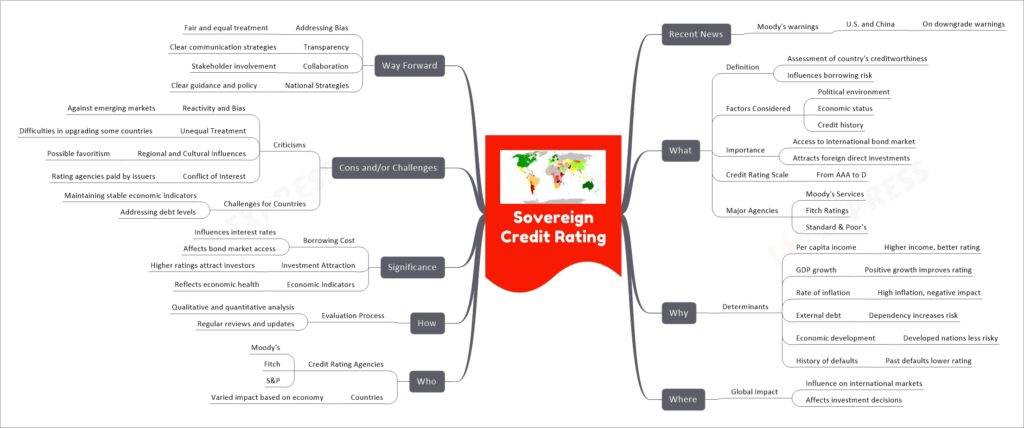Sovereign Credit Rating

Sovereign credit ratings are assessments of a country’s creditworthiness, significantly impacting its borrowing costs and ability to attract investments. These ratings are determined by major agencies like Moody’s, Fitch, and S&P, based on factors such as GDP growth, inflation rate, external debt, economic development, and history of defaults. High ratings facilitate easier access to international bond markets and foreign investments. However, these ratings have faced criticism for bias, especially against emerging markets, and issues like unequal treatment and potential conflicts of interest. Addressing these challenges involves ensuring fair treatment, improving transparency, and collaborative efforts among stakeholders to develop robust national economic strategies.
If you like this post, please share your feedback in the comments section below so that we will upload more posts like this.

